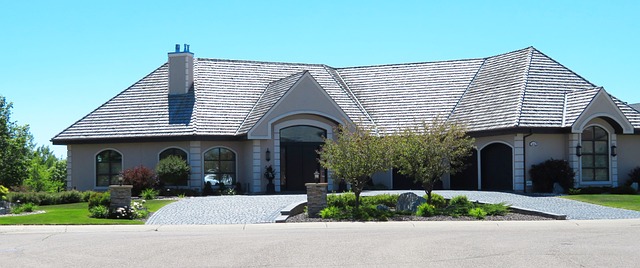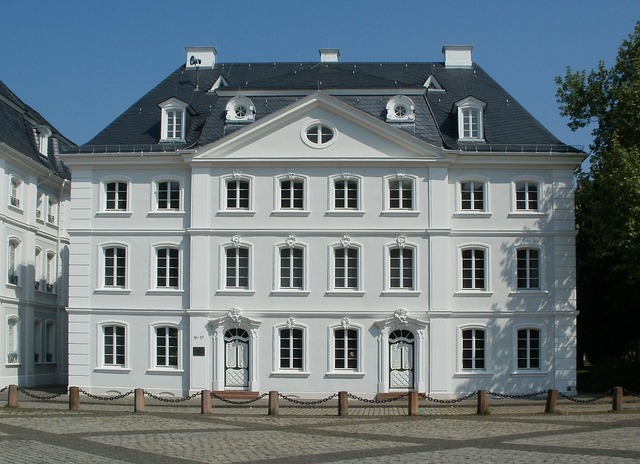Singapore’s housing landscape is dynamic, with Executive Condominiums (ECs) playing a pivotal role in addressing the diverse needs of families. As these properties evolve over time, understanding their trajectory post-five years is crucial for homeowners and prospective buyers alike. This article delves into the multifaceted aspects of EC life, from resale potential to financial considerations, legal changes, demographic shifts, and long-term lifestyle implications. We explore the transformation of ECs within a decade, the market trends that influence their value, the shifting mortgage terms, and the potential for enbloc sales. Join us as we navigate the intricacies of what happens to an EC after 5 years, ensuring readers are well-equipped with insights into this unique segment of Singapore’s property market.
- Understanding the Evolution of Executive Condominiums (ECs) in Singapore Post-5 Years
- Resale Potential and Market Trends for ECs After a Decade
- Financial Considerations: How Mortgage Terms and Property Values Shift Over Time
- Enbloc Possibilities and Owners' Eligibility for Rehousing after 5 Years
- Legal and Regulatory Changes Affecting EC Residents
- The Impact of Demographic Shifts on EC Communities After Five Years
- Long-Term Lifestyle Implications for Families Living in Executive Condominiums
Understanding the Evolution of Executive Condominiums (ECs) in Singapore Post-5 Years

The evolution of Executive Condominiums (ECs) in Singapore over a five-year span is a dynamic process influenced by both policy changes and market demand. Initially conceptualized as a housing option for middle-income families, ECs have undergone significant transformations to adapt to the changing needs of residents and the property market. Over time, the eligibility criteria for purchasing an EC have been adjusted, reflecting the government’s commitment to ensuring affordable public housing that accommodates the aspirations and income levels of different segments of the population. These modifications have been pivotal in sustaining the relevance and appeal of ECs.
Furthermore, the built environment of ECs has seen enhancements with each passing year. Development trends show a clear upward trajectory in terms of design sophistication, amenities offered, and integration with local communities. The proximity to essential amenities, such as schools, shopping centers, and public transportation, has become a priority, ensuring that EC residents enjoy both the privacy of a condominium and the convenience of urban living. Additionally, the introduction of green initiatives in these developments underscores the commitment towards sustainable living, making them not just homes but future-ready communities. As the government reviews and updates policies, the landscape for Executive Condominiums is poised to reflect the aspirations of a society that values both home ownership and quality living.
Resale Potential and Market Trends for ECs After a Decade

When considering the resale potential and market trends for Executive Condominiums (ECs) after a decade, it’s evident that several factors influence their performance in the property market. ECs, which are hybrid homes initially sold at subsidized prices to Singaporeans before they become private property after a certain period, have shown a consistent track record of appreciation over the years. This is largely due to their strategic locations, which often come with mature estates offering amenities and connectivity that appeal to a broad spectrum of buyers. The resale market for ECs typically caters to upgraders who are looking for larger spaces or those seeking an investment opportunity. Market trends suggest that as these properties transition from public to private housing, their value tends to increase, driven by the general upward trend in property prices in Singapore. Investors and potential buyers should take note of the changing demographics and evolving preferences within the residential market, which can influence the demand for ECs. Factors such as the introduction of newer developments, changes in financing options for ECs, and broader economic conditions all play a role in shaping the resale landscape for these properties. Prospective buyers should analyze past sales trends and project future values based on current market dynamics and government policies that govern the housing market. As an investment, ECs can be a lucrative option for those with a long-term perspective, given their unique position in the property spectrum.
Financial Considerations: How Mortgage Terms and Property Values Shift Over Time

Over a five-year span, an Executive Condominium (EC) can undergo significant financial shifts influenced by mortgage terms and property values. Initially, ECs are designed for upgrade from flat dwellers to condominium living, with 90% loans available on a 25-year tenure from financial institutions. As years progress, the loan’s principal component reduces, leading to lower monthly mortgage payments. Concurrently, property values may appreciate or depreciate based on economic conditions, regional demand, and broader real estate market trends. These changes can impact the equity position of EC owners, potentially offering them greater financial flexibility as their stake in the property increases with amortization. Owners nearing the end of their mortgage term might find themselves in a favorable position to refinance or sell, depending on how the property’s value has evolved relative to their initial purchase price. Understanding the nuances of these financial considerations is crucial for EC residents to make informed decisions about their living arrangements and investment portfolios over the long term.
Enbloc Possibilities and Owners' Eligibility for Rehousing after 5 Years

After five years of occupancy, EC (Executive Condominium) units reach a pivotal juncture where owners become eligible for rehousing options under the Enbloc sale process. This process allows for the collective sale of the development, whereby all unit owners can potentially benefit from the appreciation in property values. Upon reaching the five-year mark, EC residents can explore the enbloc market, provided their units meet the minimum occupation period stipulated by the CPF Housing & Development Board (HDB). Should an enbloc sale materialize, the proceeds are distributed among the owners, and they may opt to invest in a new property, either within the EC category or transition to private residential properties without the subsequent resale levy that typically applies. This opportunity enables owners to capitalize on their property’s value while simultaneously securing alternative housing arrangements. It’s a strategic move for those looking to upgrade or diversify their real estate portfolio, as the EC market continues to evolve and offer dynamic rehousing opportunities post the five-year period. Owners considering enbloc sales should stay informed about market trends and legal requirements to maximize the potential benefits of this process.
Legal and Regulatory Changes Affecting EC Residents

The Impact of Demographic Shifts on EC Communities After Five Years

Over a span of five years, executive condominium (EC) communities can experience significant demographic shifts that influence the social fabric and infrastructure needs within these developments. As families grow and original residents move on, ECs often witness an influx of younger couples and families, reflecting the evolving age composition of residents. These shifts can lead to a dynamic change in the community’s character, with varying demands for educational institutions, healthcare services, and recreational facilities. The initial design and layout of the EC may need adjustments to cater to these changing needs, necessitating strategic planning by the management and relevant authorities to ensure that the community remains vibrant and accommodating to its diverse population.
The impact of such demographic changes on EC communities over half a decade is multifaceted. It extends beyond the immediate living environment; it affects the economic landscape as well. With a younger, growing population, the demand for commercial spaces within or adjacent to the ECs can increase, potentially giving rise to new businesses and job opportunities. Moreover, as residents’ disposable income changes with career advancements and family expansion, their consumption patterns and preferences evolve, influencing the types of amenities and services that developers and retailers prioritize in these communities. Understanding and adapting to these demographic shifts is crucial for maintaining the long-term sustainability and appeal of EC residences.
Long-Term Lifestyle Implications for Families Living in Executive Condominiums

After half a decade, families residing in Executive Condominiums (ECs) may observe profound lifestyle implications that extend beyond the immediate living experience. These implications are shaped by various factors, including changes in household dynamics, the maturing of children, and evolving personal preferences. As children grow, the space within an EC becomes either too expansive or prompts the need for additional rooms, reflecting a shift in the family’s spatial requirements. The community within an EC also evolves over time, with residents developing deeper connections as they share experiences of their children’s milestones and collective memories. This social fabric can lead to strong neighborhood bonds that are cherished for their stability and diversity.
Furthermore, the long-term residency in an EC can influence families’ lifestyles by providing a balance between private and communal living. The amenities and facilities within an EC are designed with the growth of its residents in mind, catering to varying age groups and interests. As such, the lifestyle implications for families in ECs are multifaceted, encompassing not only the physical structure they inhabit but also the social environment they are part of. The transition from a ‘starter home’ to a more established family dwelling is a natural progression that many EC residents experience, and one that underscores the adaptability and long-term value proposition of living in an Executive Condominium.



